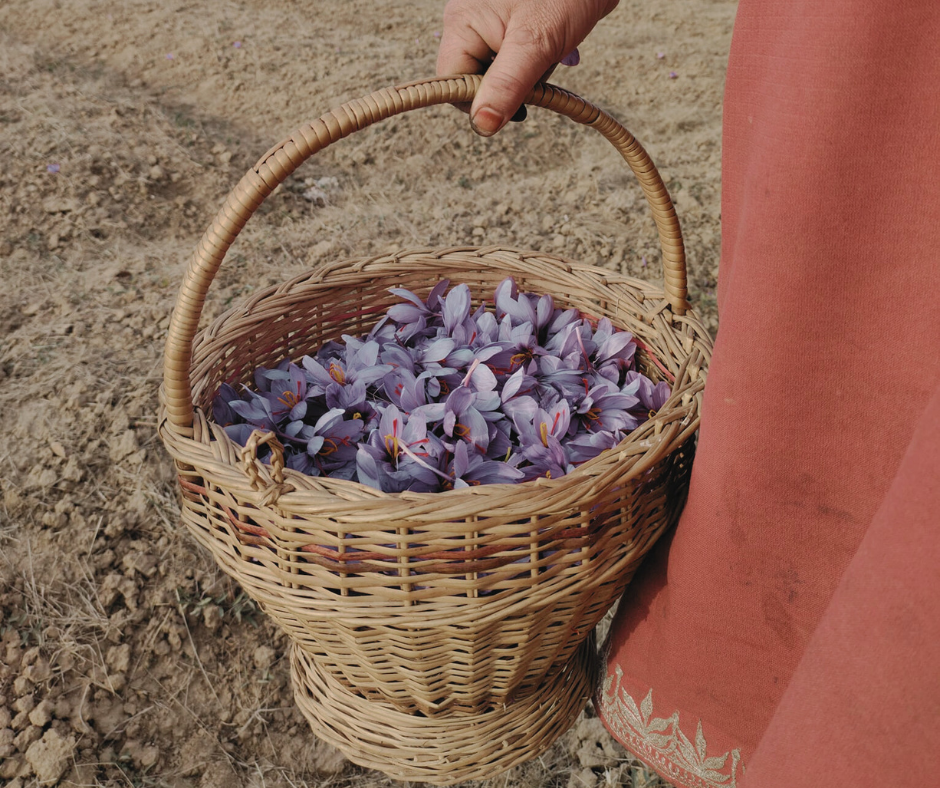Kashmiri saffron, often referred to as the “red gold of Kashmir,” is renowned for its exquisite flavor, vibrant color, and rich aroma. Beyond its culinary allure, saffron farming in Kashmir plays a significant role in empowering local communities and promoting sustainable practices. This blog explores the journey of saffron farming in Kashmir, its impact on the community, and the sustainable methods employed in cultivating this precious spice.
The Cultural Significance of Kashmiri Saffron:
Kashmiri saffron has deep cultural roots in the region, with a history dating back centuries. Explore the historical and cultural significance of saffron in Kashmir, including its role in traditional ceremonies, festivals, and as a symbol of luxury and prosperity.
The Life of a Saffron Farmer:
Delve into the lives of saffron farmers in Kashmir and gain insights into their experiences, challenges, and rewards. Discuss the dedication and hard work required to cultivate saffron, from planting the bulbs to meticulously hand-harvesting the delicate crimson threads.
Economic Impact on Local Communities:
Examine how saffron farming contributes to the economic development and empowerment of local communities in Kashmir. Highlight the socio-economic benefits, such as employment opportunities, income generation, and the role of cooperatives in supporting farmers.
Sustainable Farming Practices:
Explore the sustainable farming practices employed in saffron cultivation in Kashmir. Discuss the use of natural fertilizers, water management techniques, and eco-friendly pest control methods that help preserve the environment and ensure the long-term sustainability of saffron farming.
Preserving Traditional Knowledge:
Highlight the importance of preserving traditional knowledge and farming techniques passed down through generations in saffron cultivation. Discuss the role of cultural heritage in maintaining the authenticity and quality of Kashmiri saffron.
Empowering Women in Saffron Farming:
Celebrate the involvement of women in saffron farming and the positive impact it has on their lives. Discuss initiatives that promote gender equality and empower women in rural Kashmir through saffron farming, showcasing their roles as skilled workers and entrepreneurs.
Global Recognition and Market Demand:
Examine the global recognition and market demand for Kashmiri saffron. Discuss the factors that contribute to its superior quality and distinguish it from other saffron varieties. Explore how the international demand for Kashmiri saffron benefits local farmers and the regional economy.
Challenges and Future Prospects:
Address the challenges faced by saffron farmers in Kashmir, such as climate change, market fluctuations, and competition. Discuss ongoing initiatives, research, and governmental support aimed at addressing these challenges and ensuring a prosperous future for saffron farming.
Conclusion: Saffron farming in Kashmir is not just about producing a highly sought-after spice; it is a story of community empowerment, sustainable practices, and cultural heritage. By understanding the journey of saffron farmers and their commitment to preserving traditional knowledge, we can appreciate the value of Kashmiri saffron beyond its culinary applications. Let us acknowledge and support the efforts made to empower local communities and ensure the sustainable future of this precious spice.
